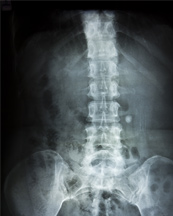What is Cervical Fusion Surgery?
 Nearly 80% of Americans experience back and neck pain during their lifetime. A painful episode can flare up after a simple movement like bending down to pick up a child’s toy or a pair of shoes. Most times, the painful episode resolves, however sometimes the pain can reoccur and may even become more chronic. Many patients with chronic pain report that their most severe painful episodes often occur unpredictably. These episodes can result in significant immobility and can be debilitating. In patients where nonsurgical treatments fail to provide acceptable pain relief and in those patients whose quality of life has deteriorated significantly, spine surgery may be a possible option and may help to relieve a significant amount of pain.
Nearly 80% of Americans experience back and neck pain during their lifetime. A painful episode can flare up after a simple movement like bending down to pick up a child’s toy or a pair of shoes. Most times, the painful episode resolves, however sometimes the pain can reoccur and may even become more chronic. Many patients with chronic pain report that their most severe painful episodes often occur unpredictably. These episodes can result in significant immobility and can be debilitating. In patients where nonsurgical treatments fail to provide acceptable pain relief and in those patients whose quality of life has deteriorated significantly, spine surgery may be a possible option and may help to relieve a significant amount of pain.
Key Considerations for Cervical Spinal Fusion
Cervical spinal fusion (also known as arthrodesis) is a surgery that joins two or more bones in the neck. In appropriately selected patients, the result is a strengthened neck structure that can help provide pain relief. Fusions in the neck are performed in patients with disc herniations (slipped discs), fractures, instability, arthritis, and advanced disc degeneration.
A few things that you should be aware of when considering cervical fusion surgery include the following:
- Frequently a disc (the cushion between the vertebrae) is removed which relieves the pressure (decompression) on a nerve and the spinal cord. This relieves the pain, which was due to the pinched nerve.
- If necessary, your spine surgeon may remove a damaged vertebrae and the adjacent discs to relieve even more pressure off of the spinal cord and nerves.
- After the decompression, your spinal surgeon will repair the spine with a fusion, which is a procedure that joins two or more bones to each other.
- Your spine surgeon may harvest and use bone from your body (i.e.- your hip or iliac crest) to help join or “fuse” two or more vertebrae to each other. Bone from a bone bank or other synthetic fusion materials may be used instead. These simulate the growth of new bone.
- Your spine surgeon might use metal implants (plates, cages, screws, rods) to help stabilize the vertebrae until new bone grows and the spine heals. Most often, these are permanently implanted.
- A drain may be used along with a cervical brace, which is called a cervical collar. The drain is removed after a day or two. Your surgeon will provide instructions about the brace if one is used.
Many patients are relieved to find out that cervical fusion does not mean that they will no longer be able to bend or turn their necks. While cervical spinal fusion may stiffen parts of the neck somewhat, most people do not experience reduced neck flexibility and function.
Cervical fusion might be an option for patients with spinal stenosis, a herniated disc, the effects of rheumatoid arthritis, an infection, tumors, or spinal deformities. Speak with your spine surgeon about what treatment is best for you as well as the benefits and risks of this surgery.






